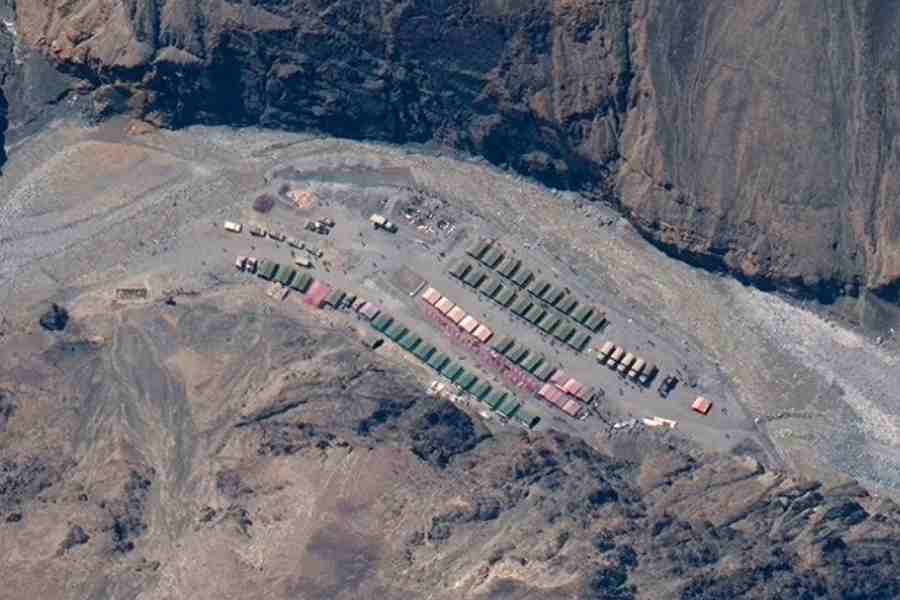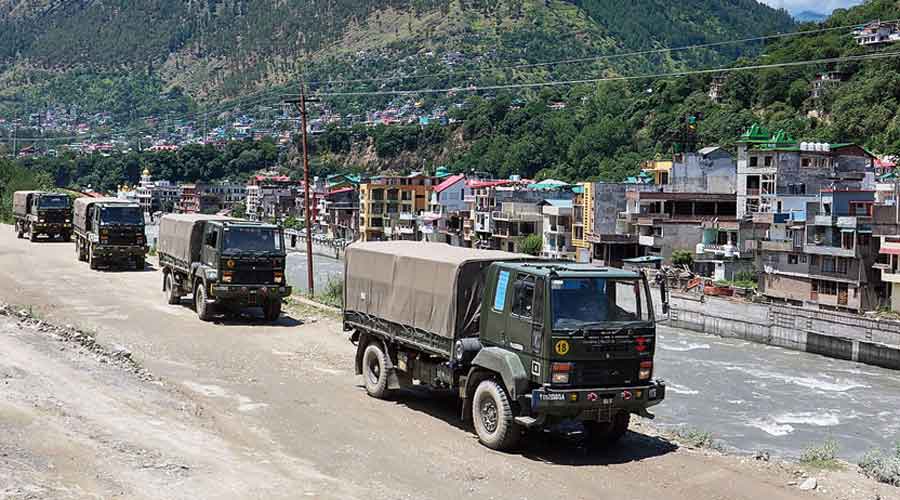The Chinese army has demanded the creation of a 15-20km buffer zone inside India-claimed lines on the strategic Depsang Plains as a precondition for disengagement, refusing India’s offer of a 3-4km demilitarised strip, sources in the security establishment have told The Telegraph.
“The Chinese want a buffer zone with a width of 15-20km inside Indian territory as part of the disengagement process from the Depsang Plains,” an official from the intelligence wing of the Indo-Tibetan Border Police (ITBP) said.
“During negotiations, India rejected the demand and instead agreed to a 3-4km buffer zone, but the Chinese refused to budge.”
The widest of the existing buffer zones in eastern Ladakh — which entail the Chinese stepping back a few kilometres while remaining within India-claimed lines, and the Indians retreating an equal distance — is 10km. Their creation has prompted military veterans to accuse New Delhi of “capitulating” and ceding more territory to the Chinese.
The ITBP official said the Chinese made the latest demand during the 18th round of corps commander talks last month, and reiterated it during subsequent military talks at lower levels.
“The Chinese army is already entrenched 18km inside India-claimed lines and now wants a buffer zone of another 15-20km. It’s apparent that they are working aggressively to establish a revised status quo along the Line of Actual Control in the region,” he said.
A defence ministry official said India had rejected China’s “unjust” demand and that negotiations were on to resolve the standoff.
The Depsang Plains remain the only friction point where no disengagement has taken place since the Chinese transgressed India-claimed lines in eastern Ladakh in May 2020.
Demilitarised “buffer zones” have so far been established on the Galwan Valley (3km wide), Pangong Lake (10km), Gogra (3.5km) and Hot Springs (4km) as part of the disengagement process, defence ministry sources said.
An Indian Army official said the Chinese army’s “illegitimate” demand for a 15-20km buffer zone would never be accepted.
He declined comment when told that the creation of the buffer zones at the other transgression points too had happened on China’s terms, as flagged by military veterans.
A former lieutenant general said India’s “double standard” in dealing with the Chinese intrusion in Ladakh had hurt the country’s sovereignty and territorial integrity.
“The Narendra Modi government has so far denied any Chinese intrusion in Ladakh while at the same time willingly accepting the Chinese army’s terms by retreating from its positions to create buffer zones within Indian territory,” the veteran said.
“The Chinese have taken advantage of the chinks in the armour of the so-called muscular government, which is playing into their hands only to keep its domestic audience in a make-believe world.”
A retired major general said: “The government has capitulated and handed the Chinese more territory on a platter by agreeing to the buffer zones; now they (the Chinese) want more at the Depsang Plains.”
India’s defence ministry has said that these “buffer zones are temporary and India has not given up its rights on those areas”.
A research paper submitted by an IPS officer during the DGPs’ conference in Delhi in January this year had flagged how India had lost access to 26 of its 65 patrolling points (PPs) in eastern Ladakh following the Chinese incursion.
The Depsang Plains — a 972sqkm plateau situated 16,000ft above sea level — lie to the west of Aksai Chin, which is under illegal occupation by China, and have the Siachen Glacier on their northwestern edge.











